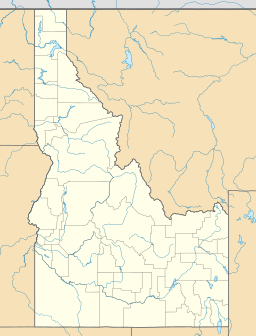Bear Lake (Idaho) facts for kids
Quick facts for kids Bear Lake |
|
|---|---|
| Location | Custer County, Idaho |
| Coordinates | 44°08′16″N 114°41′40″W / 44.137826°N 114.694503°W |
| Type | Glacial |
| Primary outflows | Bear Lake Creek Warm Springs Creek to Salmon River |
| Basin countries | United States |
| Max. length | 120 m (390 ft) |
| Max. width | 70 m (230 ft) |
| Surface elevation | 2,720 m (8,920 ft) |
Bear Lake is a beautiful alpine lake found in Custer County, Idaho, United States. It's located high up in the White Cloud Mountains, which are part of the amazing Sawtooth National Recreation Area. This lake is a great spot for nature lovers and adventurers.
Discover Bear Lake
Bear Lake is a special kind of lake called an alpine lake. This means it's located very high up in the mountains. Bear Lake sits at an elevation of about 2,720 m (8,920 ft) above sea level. That's really high! It's also a glacial lake, which means it was formed by ancient glaciers. Imagine huge sheets of ice slowly carving out the land, leaving behind this lake when they melted.
Where is Bear Lake?
This hidden gem is tucked away in the central part of Idaho. It's found within the stunning White Cloud Mountains, which are known for their rugged beauty and clear waters. The lake is also part of the larger Sawtooth National Recreation Area. This area protects a huge amount of land, making sure its natural beauty stays safe for everyone to enjoy.
How to Visit Bear Lake
Getting to Bear Lake is an adventure in itself! You can reach it by following Sawtooth National Forest trail 671. This trail runs along Warm Springs Creek, offering scenic views as you hike. It's a great way to experience the wilderness of Idaho.
Nearby Features
Bear Lake has some interesting neighbors. It's located just north of a peak called Watson Peak. While it's close to Swimm Lake, Bear Lake is actually in a different natural basin. This means the water from Bear Lake flows in a different direction than the water from Swimm Lake. Bear Lake's water eventually flows into Bear Lake Creek, then into Warm Springs Creek, and finally joins the Salmon River.



